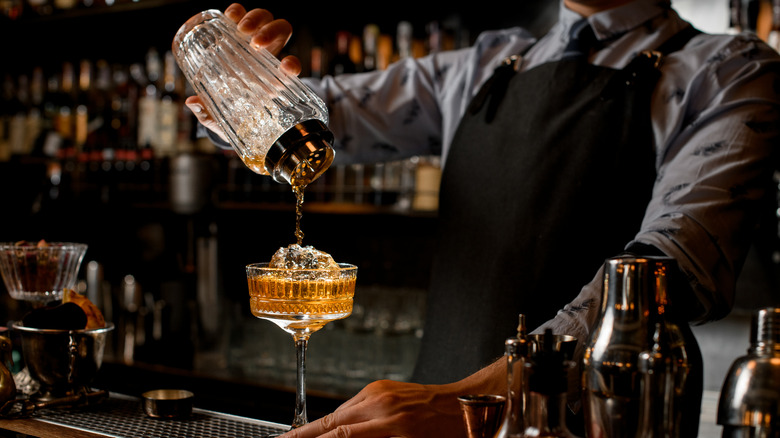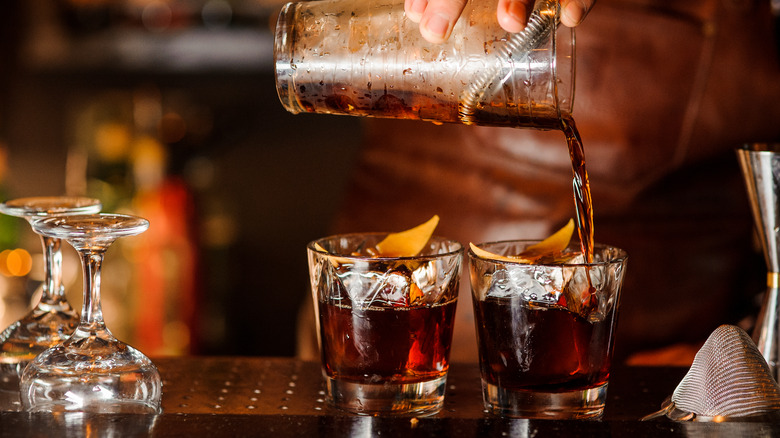Where Does The Bartending Term 'Well Drink' Come From?
When ordering a cocktail or mixed drink at a bar or restaurant, oftentimes, the menu won't specify what brand of alcohol is being used, only what kind. Similarly, when you tell a bartender you want a mixed drink, they usually won't ask for clarification as to what liquor to use. That is unless you ordered a "call drink," which Bin Wise explains as a drink that features a specific brand of liquor — Jack and coke, Tanqueray and tonic, etc.
However, if you asked for a regular whiskey and coke, gin and tonic, or any other common mixed drink like a Moscow mule, margarita, and so on, they'd give you what's referred to as a well drink. These drinks are less expensive and don't come with any specific brand of alcohol unless requested. Some bartenders may ask you what shelf liquor you'd like, but odds are they'll just give you the cheapest available. While many people are familiar with what well drinks are, they may not know how the term came to be.
The bar well
The term "well" comes from one of the many names for the underneath of the bar top. Bin Wise says this area is also referred to as the speed rail, speed rack, or speed well. Essentially, this area is stocked with liquors and mixers conveniently within the bartender's reach, allowing them to quickly and efficiently make drinks.
Generally, well liquors are bottom shelf and inexpensive. That isn't to say they're bad quality, but since they're usually added to cocktails and mixed drinks, they don't need to be top-of-the-line in terms of flavor. That being said, you can always ask your bartender to swap out a well liquor for your favorite brand. Punch says some bars will add local or new brand spirits and alcohols to their wells, too. Some of the most popular are Ketel One vodka, Fords gin, Cazadores tequila, Four Roses bourbon, Monkey Shoulder scotch, and Foursquare Probitas rum. What is stocked in the well will vary bar by bar, though.

